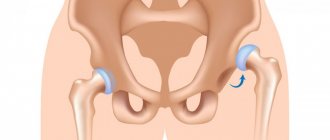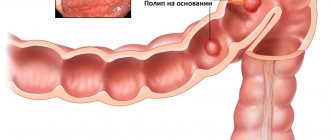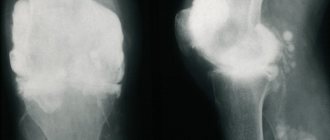Gonorrhea (gonorrhoea) is a sexually transmitted disease.
Most often it affects women between the ages of fifteen and thirty.
The structural features of female genitalia make them most vulnerable to infection.
The causative agent of the infection is gonococcus.
By affecting the female reproductive system, it causes an inflammatory process that has a negative impact on reproductive function.
The consequence is infertility.
The increased ability of microorganisms to become infected, high resistance to antibiotics, and the risk of serious complications make the task of prevention a priority.
Signs of gonorrhea infection in women
In women, the first symptoms of gonorrhea do not appear immediately.
And after some time, during which the pathogens penetrate the submucosal layer of the epithelium and begin to destroy it.
From there, with the flow of lymph, gonococci enter the bloodstream and spread throughout the body with the blood, causing inflammation of the abdominal organs.
The period before the first symptoms of infection appear is called “incubation”.
Depending on the state of the immune system in women, its duration ranges from 2 to 7 days (can be up to 30).
With a weakened immune system, the infection can spread throughout the body and cause complications such as:
- joint damage
- disruption of the heart muscle
- destruction of the cornea of the eye
- damage to the meninges
- skin damage
How does gonorrhea manifest in women?
Gonococci are specific microorganisms.
The object of their damage is the mucous layer of the genitourinary system, oral cavity, and intestines.
Photos of diseases can be viewed on the Internet.
Therefore, the symptoms of the pathology vary depending on the area in which the infection occurred.
- When the genitals in women are affected, the discharge becomes purulent and pain occurs during sex. On examination, redness of the labia and vagina is noted. Little girls may experience sticking of the labia
- If the infection affects the cervical canal of the cervix (endocervicitis), then the nature of the discharge does not change. Vaginal discomfort occurs. The causes of itching in the perineum and external genitalia are explained by irritation of the skin by secretions. Thanks to maceration, true erosion appears on the neck. Heaviness in the lower abdomen, in the sacral area and intermenstrual bleeding may occur. During sexual intercourse, a woman experiences pain
- Infectious bartholinitis is formed due to the entry of pus into the ducts of the Bartholin gland. As a result, the gland becomes inflamed and clogged, leading to the formation of an abscess. If the process is started, the abscess may open and fistulas may form.
The first signs of gonorrheal inflammation of the urethra in women are characterized by the following symptoms:
- frequent urination in small portions (dysuria), accompanied by pain and burning
- lack of feeling of complete emptying of the bladder
- swelling and redness of the external opening of the urethra, which is accompanied by painful sensations on palpation and discharge of pus
- itching sensation in the genital area
- the presence of traces of pus in the urine
If pain appears in the lower abdomen, it can be assumed that these are signs of inflammation of the bladder.
That is, cystitis develops.
- Endometritis (inflammation of the uterus). The discharge becomes sanguineous or purulent-serous, dull pain in the back and abdomen occurs, body temperature rises above 38 degrees
- Damage to the uterine appendages (tubes and ovaries) is often bilateral. During the acute phase, the patient complains of chills and fever, aching or cramping pain in the lower abdomen. If the ends of the fallopian tube are sealed, purulent foci are formed, and if the ovary is involved, a tubo-ovarian abscess is formed. As a result, multiple adhesions are formed in the pelvic area
- When gonococci spread to the peritoneum, gonorrheal pelvioperitonitis is formed. There is a sharp rise in temperature, possible vomiting, flatulence, stool disturbances, acute abdominal pain with irradiation to the epigastric region, hypertonicity of the abdominal muscles. The development of peritonitis is prevented by the formed adhesions
Symptoms of proctitis:
- itching and burning in and around the anus
- false need to empty the rectum
- feeling of heat due to a local increase in temperature
Allergic reaction
If, in addition to itching and burning of the vulva, there are no other alarming symptoms, it may be an allergic reaction to washing powder, washing liquid, sanitary napkins or cosmetics.
To get rid of the problem:
- Use only intimate hygiene products with a neutral pH (about 5.2).
- Choose liquids that contain lactobacilli, as they protect intimate areas from attack by pathogenic bacteria.
- Avoid scented panty liners. Use them only when necessary - do not use them “prophylactically” for a month, because without them the skin breathes better.
- If your allergic reaction is caused by laundry detergent or softener, start using products designed for babies or allergy sufferers.
Chronic form of gonorrhea in women
In approximately 50% of cases of infection, the disease occurs without pronounced symptoms or with mild symptoms.
The main symptoms of gonorrhea are the appearance of foul-smelling discharge in copious amounts.
A woman mistakes them for thrush or nonspecific vaginitis and tries to get rid of them on her own.
This contributes to the manifestation of false symptoms.
If the manifestations of the disease go unnoticed, because are practically absent, then the disease takes a chronic form.
Therapy for latent inflammation is difficult due to already developed complications.
Of course, the infection can be controlled.
But it should be understood that the pathology resulting from inflammation is often irreversible.
For example, as a result of prolonged inflammation in the area of the cervical canal, adhesions may form.
Because of them, the process of conceiving a child will become quite difficult.
In order to eliminate the pathology, you will have to resort to surgery.
The basis of treatment for a chronic disease is antibacterial treatment.
If you follow the recommendations of your doctor, the prognosis for the disease is positive.
Diagnosis of gonorrhea in women
To make a correct diagnosis, it is not enough to know what symptoms indicate infection with gonorrhea.
To clarify the diagnosis, a study of discharge from the genital tract is mandatory.
A smear is taken for analysis.
Since in the chronic course of gonorrhea the symptoms of the disease do not appear, gonococci may be absent in the analysis.
Therefore, doctors resort to provoking an exacerbation of the infection.
The following methods of provocation are distinguished:
- Physiological method - taking a smear in the last days of menstruation
- Nutritional – on the eve and on the day of the test, a woman is recommended to include spicy foods, pickles and alcohol in her menu
- Biological method - intramuscular injection of pyrogenal or provocation with a gonococcal vaccine
- Thermal – diathermy is carried out for 3 days in a row
- Chemical method - treatment of the cervical canal and urethral mucosa with silver nitrate
Smears are taken in three sessions every other day, two, three.
- Diagnosis of the disease begins with collecting anamnesis and interviewing the woman
- The doctor then examines the woman to recognize the visible signs and symptoms of gonorrhea.
- To clarify the diagnosis, smears are taken for bacterioscopic examination. Using culture, a laboratory technician determines the sensitivity of microorganisms to the effects of antibiotics so that the doctor can prescribe effective drugs
In addition to bacterial culture of vaginal secretions, the flora of the urethra and rectum is examined.
This approach to diagnostics allows us to obtain the most complete and reliable picture of the pathological process.
Gonorrhea (gonorrhoea): causes, symptoms and treatment
Gonorrhea (grip) is a common and difficult to control socially significant venereal disease, transmitted almost exclusively sexually from person to person. It causes acute purulent inflammation of the genital organs, which leads to serious complications. The causative agent of gonorrhea is the gram-negative diplococcus Neisseria gonorrhoeae, referred to as gonococcus. Known in medicine since 1879. Most often, gonorrhea affects people who have casual or intermittent sex without a condom. The social significance of gonococcal infection is due to the adverse impact it has on demographic indicators, since it significantly increases the incidence of male and female infertility. The mechanism of transmission of gonorrhea is contact, the route is sexual, and extremely rarely, household transmission. The source of infection is most often a sick person suffering from a chronic torpid or asymptomatic form of gonorrhea, who does not know about the presence of infection, who practices frequent sexual intercourse with a constant change of sexual partners and does not use condoms.
In men, it most often manifests as acute urethritis, while in women, gonococcal infection in most cases causes endocervicitis. Asymptomatic and torpid gonorrhea occurs in men up to 30-48%, in women up to 50-94%, especially often when localized in the pharynx and rectum.
Susceptibility to gonorrhea is very high. After a single sexual contact with a woman with gonorrhea, a man becomes infected in 20-25% of cases, and a woman after a single sexual contact with a sick man – in 50-90% of cases. Due to the similarity of epidemiological characteristics with other STIs, gonorrhea, as a monoinfection, is rarely reported. From 40% to 62% of patients with gonorrhea are infected with two or more STI pathogens: with Ch. Trachomatis and Tr.vaginalis - up to 60%-80%, with C. Albicans in women - 50% (this explains the frequent chronic thrush in women with NG, with G. Vaginalis - 17%).
With simultaneous infection with gonorrhea and other STIs, the incubation period lengthens, the clinical course of the disease changes, immunological reactivity is disrupted, its clinical and laboratory diagnosis becomes difficult, as a result of which patients are left for a long time without appropriate treatment. This contributes to the occurrence of more severe complications and increased frequency of relapses. When gonococci are associated with Trichomonas, chlamydia and other STIs, the pathogenicity of each microbe increases, while one of the pathogens can persist not only in phagocyte cells, but also in other microorganisms and protozoa (reservation of gonococci by Trichomonas vaginalis while maintaining viability). The reasons for the failure of treatment of gonorrhea may be the variability of gonococci, the appearance of microorganisms with certain cell wall defects, up to the formation of L forms, the ability of gonococci to form a microcapsule, which complicates phagocytosis and is often one of the virulence factors. Therefore, the recurrence rate of gonorrhea in the presence of a mixed infection with chlamydia, trichomonas and ureaplasma reaches 40%.
Activation of STIs (including reverse reversion from L forms to the original species of bacteria), which is associated with clinical exacerbation and relapse of the disease, is due to:
- a state of immunosuppression, which can be pathological (hypothermia, overheating, insolation, flu-like conditions, drinking alcohol and carbonated soft drinks, spicy, salty, pickled foods, stress)
- physiological, often associated with changes in the hormonal balance in the body (the moment of ovulation and increased estrogen activity, after menstruation).
- state of the body after sexual intercourse
- presence of polyendocrinopathology
- superinfection with opportunistic flora of a new sexual partner
- carrying out invasive urological and gynecological procedures.
A particular epidemiological threat is posed by patients with gonorrhea who are infected with HIV, which is due to an 8-fold increase in the concentration of HIV in ejaculate and vaginal secretions during gonorrhea, compared with only HIV-infected patients. The entry gates of infection are the columnar epithelium of the urethra, cervix, rectum and conjunctiva of the eye. Gonorrheal damage to organs covered with squamous epithelium is possible when its integrity is violated under the influence of mechanical or chemical injuries, maceration with pus and a number of other factors.
Mucosal infection involves adhesion, invasion, multiplication, and transmission of the pathogen to subepithelial tissues.
Fresh gonorrhea is distinguished (with a duration of illness of up to 2 months), which is divided into stages: acute, subacute and torpid (low-symptomatic), chronic (with a duration of more than 2 months), usually occurring torpidly, exacerbating under the influence of provoking factors, as well as asymptomatic gonorrhea, in which the carriage of gonococci on the surface of the mucous membrane does not cause an inflammatory reaction.
Main complaints in women:
- Vaginal and or cervical mucopurulent discharge
- Dysuria
- Pain in the lower abdomen
- Dyspareunia
- Pain and discharge from the rectum.
Main complaints in men:
- Purulent discharge from the urethra
- Dysuria
- Pain in the urethra
- Pain in the perineum radiating to the rectum
- Pain and discharge from the rectum.
The main manifestations of gonorrhea in newborns:
- Eye damage, rhinitis, vulvovaginitis.
The main manifestations of acute gonorrheal infection in women:
- urethritis
- cervicitis
- vulvovaginitis, vestibulitis, bartholinitis.
The main manifestations of acute gonorrhea in men:
- urethritis
- balanoposthitis.
In men and women: conjunctivitis, iridocyclitis, proctitis, pharyngitis with damage to the pharynx, tonsils, tongue, gums.
The main manifestations of acute gonorrhea in children:
- urethritis, vulvovaginitis, conjunctivitis, proctitis, pharyngitis, arthritis.
The main manifestations of gonorrhea in newborns:
- ophthalmia
- vulvovaginitis.
Disseminated gonococcal infection in the form of sepsis, myocarditis, meningitis, arthritis, bursitis, synovitis, tenosynovitis, osteomyelitis is extremely rare.
Complications of gonorrheal infection in women (lower genitourinary system):
- chronic urethritis
- chronic cervicitis is the most common manifestation of gonococcal infection. In chronic cases, the presence of cervical erosions and cervical retention cysts is noted (ovuli Nabotti, ON)
- abscess of the Bartholin gland.
Upper genitourinary system (PID):
- endometritis
- salpingitis with frequent tubal obliteration
- tubo-ovarian abscess
- pelvioperitonitis with the development of adhesions in the pelvis and possible ectopic (ectopic) pregnancy
- perihepatitis (Fitz-Hugh-Curtis syndrome)
- infertility.
Complications of gonorrhea in men:
- urethritis (paraurethritis, tizonitis, littreitis, morganitis, paraurethral abscess, colliculitis, catarrhal, interstitial, cystic, atrophic)
- balanitis, balanoposthitis
- phimosis, paraphimosis
- urethral stricture (single or multiple, ring-shaped, sickle-shaped, looped, nodular of varying length and diameter)
- lymphangitis, lymphadenitis
- epididymitis, orchiepididymitis (acute, subacute, chronic). Sometimes combined with differentialitis and funiculitis. They can often be complicated by impaired patency of the appendage and the development of obstructive infertility and (less commonly) autoimmune infertility.
- Prostatitis (acute, subacute, chronic prostatitis, catarrhal, follicular, parenchymal) proceeds without treatment indefinitely and its course is accompanied by exacerbations. Relapses of prostatitis can be caused by drinking alcohol, spicy, salty, canned food, hypothermia or overheating, dysrhythmia of sexual activity, and unprotected sexual intercourse.
- vesiculitis is often combined with prostatitis and epididymitis. There are catarrhal, deep, empyema of seminal vesicles, perivesiculitis.
- infertility.
Disseminated gonococcal infection (systemic complications in men and women):
- arthritis, tenosynovitis
- skin lesion
- endocarditis, myocarditis, pericarditis
- meningitis, sepsis
- Anorectal gonorrhea, bladder, ureters, kidneys, mouth (60-80%), nose, ear, eyes, larynx is asymptomatic.
The clinical manifestations of gonorrhea have undergone a number of significant changes over the past decades. In particular, irrational therapy with antibacterial drugs (including self-medication) and, as a consequence, an increase in the resistance of gonococci to them, through an increase in the amount of plasmid-mediated production of B lactamase.
Indications for examination for gonorrheal infection
For men:
- presence of complaints of purulent or mucopurulent discharge from the urethra, itching in the urethra
- symptoms of dysuria
- the presence of inflammatory changes in the area of the external urethral opening, paraurethral passages
- presence of pain in the area of the epididymis and (or testicle)
- presence of pain or discharge from the rectum, signs of proctitis
- presence of signs of inflammation of the prostate gland
- presence of signs of conjunctivitis
- history of unprotected sexual intercourse
- presence of trichomoniasis in tests after treatment of the latter (or other STIs)
- infertility.
Among women:
- the presence of inflammatory diseases of the genitourinary area, purulent or mucopurulent vaginal discharge, manifestations of proctitis, vulvovaginitis, cervicitis.
- inflammatory diseases of the pelvic organs (PID, hydro- or pyosalpings, endometritis, adnexitis) adhesions of the pelvic organs.
- presence of complaints about emerging subjective disorders in the genital area (itching, burning during urination, pain in the lower abdomen, increased leucorrhoea, spotting)
- presence of cervical erosion or dysplasia
- presence of cervical cysts (ovula Nabotti, ON)
- presence in tests of trichomoniasis (especially after treatment of the latter) or other STIs
- presence of T2, T3 cytological types of smears
- presence of signs of conjunctivitis
- unprotected sexual intercourse
- infertility, habitual miscarriages up to 12 weeks (frozen, non-developing pregnancy), history of premature birth.
- Pregnant women are examined three times:
- 1 examination should be carried out upon registration
- 2nd examination – at 27-30 weeks
- 3 examination – at 34-40 weeks
Outside the specified periods, examination of pregnant women is carried out according to indications (the appearance of discharge from the genital tract, subjective complaints, etc.).
- in gynecological hospitals, all women who were not examined before hospitalization are examined before prescribing antibacterial treatment
- in maternity hospitals all women giving birth without exchange cards are examined
- parturient women with a complicated course of the postpartum period (preferably 5-6 days after birth).
Newborns - with purulent conjunctivitis or vulvovaginitis. If the gonococcal etiology of conjunctivitis or vulvovaginitis is confirmed, parents are examined. Children (girls) – with symptoms of vulvovaginitis.
Faces:
- have had sexual contact with a person with gonorrhea
- being tested for STIs
- who have been diagnosed with trichomoniasis (before and, especially, after treatment of the latter).
- subjected to sexual violence.
If the source of infection is unknown, it is recommended to repeat serological testing for Lues after 3 months, HIV, hepatitis B and C after 3-6-9 months.
Methods for diagnosing gonorrhea:
- microscopy of stained smears
- cultural (seeding on In Tray GC, BioMed Diagnostics, Inc, USA)
- determination of sensitivity of gonococci to antibiotics
- PCR, LCR, -NASBA (molecular biological, transcriptional amplification reaction).
- pif.
In the laboratory diagnosis of gonorrhea, situations often arise when it is not possible to identify gonococcus in the presence of an obvious clinical disease or in persons indicated as the source of infection with this infection. Such situations may be due to the fact that after contact with the epithelium, gonococci quickly penetrate the subepithelial tissue, numerous glands and crypts, where they find favorable conditions for existence. Over time, they may generally disappear from the surface of the epithelium of the genitourinary tract and be located in the urethral glands and crypts, the mouths of which are often clogged with purulent plugs or compressed by growing connective tissue. The small pseudo-abscesses that form are a reservoir of gonococci, which, under certain “provocative” conditions (sexual intercourse, menstruation, alcohol intake) open into the urethra and lead to infection of the partner. After a few days or even hours, gonococci again disappear from the surface of the mucous membrane or cervical canal and may not be detected during the examination.
Improving the quality of methods for laboratory identification of STI pathogens is facilitated by:
- careful selection of location and material for testing for the presence of pathogens (freshly released urine, free discharge or scraping of the epithelium from the urethra, vagina, cervical canal, rectum, conjunctiva, nasopharynx)
- the use of urological and gynecological manipulations to examine the material of the prostate gland, seminal vesicles, tubules of the epididymis, ejaculate, endometrium, contents of cervical cysts (Ovula Nabotti), uterus, fallopian tubes, sactosalpings, ovarian cysts
- correct determination by clinicians of the moment of examination for STIs, taking into account the hormonal background (phase of the menstrual cycle), time of conduct, the nature of the clinical course of the infectious process, “provoking” factors
- conducting a parallel study of clinical material from two or more lesions simultaneously
- re-examination for STIs with a negative primary result after a certain period of time and using different methods
- the possibility of re-examination of the patient if one infection is detected with the parallel presence of clinical symptoms corresponding to another STI.
At the present stage, chronic, low- and asymptomatic forms prevail in patients, as a result of which patients do not consult a doctor in a timely manner, and the internal genital organs inevitably become involved in the infectious process. In this case, the gonococcus “goes” into membrane-limited zones (litreitis, morganite, etc.) and overlying organs of the genitourinary system (epididymis, fallopian tubes, etc.), which are inaccessible for taking material using publicly available methods. In addition, identifying pathogens of low-symptomatic chronic forms of urethrogenic STIs is hampered by the lack of intensive division of the pathogen, which is insufficient for microscopic and microbiological methods to identify the amount of the pathogen.
Frequent detection of saprophytic aerobic bacteria and apathogenic anaerobes in cultures, as a rule, is not evidence of their etiological role and the basis for establishing a diagnosis of “bacterial urethritis”.
The presence in smears or in the secretion of the prostate gland or seminal vesicles of more than 10-15 leukocytes, inside (in acute gonorrhea) or extracellular (in chronic form) gr (-) diplococci indicates the presence of gonorrheal lesions. Under the influence of antibiotics, gonococci can quickly change their properties and become gram-positive gr (+). It should be borne in mind that negative results of a single study of prostate secretion do not mean that there are no pathological changes in the prostate gland. Due to the occlusion of the excretory ducts of the lobules of the prostate gland by an inflammatory mucous thick secretion containing bacteria, leukocytes, the restored outflow from the infected prostatic ducts of the prostate gland on the 4th massage of the prostate gland is a more objective criterion of inflammation (increased number of leukocytes in the secretion of the prostate gland).
The principles of treatment of gonorrhea should be based on the fact that gonorrhea usually occurs in association with Trichomonas and other STIs.
Therefore, the order of treatment for such an associate will be as follows:
- maximum sanitation from trichomonas infection followed by the strictest control by all available methods
- in the presence of gonorrheal infection, its treatment begins after convincing negative controls for trichomoniasis
- chlamydial and conditionally pathogenic myco-ureaplasma infections are subsequently treated
- Antiviral therapy completes the rehabilitation.
Gonorrhea prevention:
- sex with a condom (does not guarantee 100% protection).
- individual prevention for men, no later than 2 hours after sexual intercourse.
If you still have questions about gonorrhea (gonorrhea) or there is an urgent need for personal consultation on STDs, I am waiting for your questions and calls.
In Kyiv, consultations and examinations for STDs can be done at the addresses indicated in the contacts.
Be healthy and take care of yourself! Your doctor Manzhura A.I.
Classification of gonorrhea
Depending on how long ago the pathology developed, gonorrhea can be fresh or chronic.
Taking into account the existing symptoms, fresh gonorrhea can be acute or subacute in nature.
Chronic gonorrhea occurs in women with mild symptoms and with periods of exacerbation.
Sometimes it happens that the disease occurs without symptoms, but tests of discharge indicate the presence of infection.
In this case, there is a case of carriage of gonorrhea.
Inflammation of the lower (urethritis, vaginitis, bartholinitis, cervicitis) section of the urogenital system, including the pelvic organs, allows us to distinguish both the genital form of gonorrhea and the extragenital one.
The disease can occur with or without complications.
Kinds
There are genital and extragenital (non-genital) gonorrhea. Genital gonorrhea is characterized by damage to the genitourinary organs.
The group of extragenital gonorrhea includes:
- anorectal gonorrhea (inflammation of the rectum),
- gonorrhea of the skeletal and muscular systems (gonorrheal arthritis),
- gonorrheal lesions of the conjunctiva of the eyes (gonoblenorrhea),
- gonorrheal infection of the pharynx (gonococcal pharyngitis).
The disease is divided into fresh, chronic and latent gonorrhea.
Fresh gonorrhea is said to occur when the infection occurred less than 2 months ago. Fresh gonorrhea is divided into acute, subacute and torpid (there are no complaints, but there is slight discharge).
If the infection occurred more than 2 months ago, chronic gonorrhea is diagnosed.
Latent or hidden gonorrhea has no clinical manifestations.
Ways of infection with gonorrhea
The main route of infection with gonorrhea is sexual .
The infection is transmitted during sex.
Even with one contact with an infected person, the probability of infection is very high.
The addition of gonorrhea through domestic means is unlikely, since gonococci are very unstable in the environment and die quickly outside the body.
If pus gets on the panties, the microorganisms retain their vital activity until it dries.
In order for an infection to activate in the body, microbial cells must enter in large quantities.
Therefore, such versions of infection as a toilet seat, visiting a swimming pool, using shared towels and bath accessories are not always successful.
Due to the lack of resistance of pathogens in the external environment, kissing cannot serve as a method of transmitting infection.
If the mother of a newborn is sick with gonorrhea, then there is a high probability of infection during childbirth as the baby passes through the birth canal.
As a result, the baby may develop gonorrheal conjunctivitis, which is characterized by symptoms of eye damage in the form of ulcers.
After they heal, scars remain, which leads to blindness.
Infection of little girls can occur from a sick mother through her personal belongings.
Unconventional sex leads to infection of the oral cavity, causing inflammation of the pharynx and tonsils, as well as the rectum, provoking the development of proctitis.
The source of infection can be sex toys and vibrators used by the patient.
Gonorrhea in women: risk factors
Women of easy virtue (prostitutes) are primarily at risk of infection.
And also, infection is promoted by:
- a girl having sexual intercourse at an early age
- promiscuous sexual relations with persons of questionable behavior leading a promiscuous sexual life
- ignoring barrier protection (condoms, spermicides)
The prosperity of infection and damage to the uterus and appendages (fallopian tubes) in the ascending way is promoted by:
- manipulations such as intrauterine interventions (abortion, probing of the uterine cavity, insertion of an IUD, childbirth)
- insufficient intimate hygiene
- menstruation
Gonococcal infection is characterized by a combination with other STIs (Trichomonas, HIV).
During oral sex, gonorrheal stomatitis can develop with complications such as pharyngitis or tonsillitis.
And with anal - proctitis.
Epidemiology
This is an infectious disease that is transmitted through unprotected coitus. Gonorrhea is classified as a sexually transmitted disease, and its causative agent is Neisseria gonorrhoeae, in other words, gonococcus. Every year the World Health Organization records 62 million diseases. As of 2000, 170,000 sick people (men and women) were discovered in Russia.
Ways of transmission of gonorrhea:
- petting
- genital-anal contact
- genital-oral coitus
- traditional sexual intercourse
- household way
It is very, very difficult to become infected through household items. This happens if a person commits gross violations of hygiene rules, for example, drying himself with someone else’s towels, wearing someone else’s underwear, etc. The route of transmission from mother to child is also relevant, when the baby passes through the birth canal during childbirth.
The pathogen cannot live long in the external environment. Temperatures above 55˚C, as well as ultraviolet radiation, are harmful to it. Gonococci are contagious (in medicine this is called contagiousness), therefore, if you have unprotected sexual intercourse with a sick person, the chance of becoming infected is approximately 70%.
Gonococci
Rarely does a woman suffer from gonorrhea alone; in most cases, infection with chlamydia or trichomonas is also detected. Women's risk groups:
- women under 25 years old
- women of easy virtue
- presence of STDs in the body
- those who have already had gonorrhea 1 or more times
- pregnant women
- those who do not or rarely use condoms
- leading an antisocial lifestyle (using drugs or abusing alcohol)
Where to go if you have gonorrhea
If there is a genital form of pathology, a woman will need to make an appointment with a gynecologist or venereologist.
The doctor will tell you which doctor treats this pathology and give a referral.
As a rule, the extragenital form of gonorrhea is often discovered at an appointment with other specialists.
A dentist may detect an inflammatory process in a woman’s mouth, the symptoms of which will be atypical for nonspecific stomatitis or gingivitis.
An otolaryngologist will detect symptoms of gonorrhea if you complain of sore throat and sore throat.
The ophthalmologist will make an assumption about the disease in case of specific eye damage.
The proctologist may also, after collecting a history from which it is clear that the patient has resorted to unconventional sex, may suspect the presence of gonorrhea.
Be that as it may, a specialist does not have the right to make a final diagnosis only on the basis of an initial examination and anamnesis.
In any case, the doctor will take smears and send them for bacterial culture, microscopy, PCR and PIF examination.
To find out which institutions treat sexually transmitted diseases and where to go anonymously, you can find information on the Internet.
In addition, in every city there is a skin and venous dispensary where venereologists conduct consultations.
Diagnosis of the disease
The beginning of diagnosing gonorrhea is by interviewing the patient and taking an anamnesis. Next, the patient is examined to detect the causative agent of the disease, and the clinical manifestations of the disease are examined. However, the most accurate result is shown by the test results.
A bacterioscopic study consists of staining a smear using a special method that detects pathogenic microorganisms in acute gonorrhea with almost 100% accuracy. Chronic gonorrhea is much more difficult to detect. The bacteriological method makes it possible to determine the sensitivity of the found bacteria to antibacterial drugs, which is necessary for further treatment.
In this situation, in addition to standard tests, the urethral secretions, urinary ducts and rectal lavage are examined. All this together gives a clear picture of the disease and allows it to be treated most effectively.
How is gonorrhea treated in women?
After confirming the diagnosis based on the symptom complex and the obtained culture results for sensitivity to antibiotics, the specialist prescribes treatment for the patient.
The form, location of the infection, the presence of other STIs, and whether there are complications are also taken into account.
For more effective therapy, antibiotics of the latest generation are prescribed, which have a detrimental effect not only on the pathogen, but also on the accompanying gram-negative flora.
The treatment of the disease is based on the prescription of penicillins, cephalosporins, and fluoroquinolones.
In the acute course of the process, the following drugs are prescribed:
- Doxycycline
- Azithromycin
- Ciprofloxacin
If the disease is accompanied by trichomonas or chlamydial infection, then metronidazole is added.
The dosage of a particular drug depends on the stage of the process.
Why do symptoms not go away when self-treated with antibiotics?
The reason may be due to the resistance of the microorganism or an incorrectly selected dosage.
- If gonorrhea is acute and affects only the lower parts of the urogenital tract, then taking Cefixime, Ceftriaxone, Ciprofloxacin, Azithromycin in a single dosage is sufficient
- If the ascending genitalia is affected and there is a concomitant infection, the time to take the drugs is from seven to ten days
- For the treatment of the chronic form, a gonococcal vaccine is used to transform the process into an acute state, stimulate the activity of the immune system, and perform autohemotherapy
To enhance the effect of treatment, topical drugs are prescribed:
- 0.5% silver nitrate solution for urethral lavage
- Miramistin, Chlorhexidine, potassium permanganate solution are used for vaginal treatment as antiseptics
After the inflammatory process subsides, you will need to undergo a course of physical therapy.
At the end of the antibacterial course, drugs are prescribed to help restore the vaginal flora.
For effective treatment and prevention of re-infection, medications are prescribed to both sexual partners.
How quickly a woman’s unpleasant symptoms caused by inflammation go away during treatment depends on strict adherence to the prescribed drug regimen.
It is necessary to understand that until the treatment is completed and the microorganisms in the smears disappear, it is not recommended to have intimate relations or drink alcoholic beverages.
Treatment
Currently, pathogen strains that exhibit resistance to penicillin, tetracyclines and ciprofloxacin are widespread.
Strains resistant to fluoroquinolones are widespread in Asian countries.
In the heterosexual part of the population, 1/3 of cases of disease are combined with chlamydial infection, so treatment of gonorrhea in women in this case is carried out with two antibiotics.
In case of uncomplicated course of the disease, a single dose of ciprofloxacin (Tsiprolet) is recommended. If the disease is detected in a pregnant woman, treatment is carried out with third-generation cephalosporins or spectinomycin.
With adequate treatment, the patient's condition improves within a few days. Do not self-medicate. Only a doctor will prescribe the correct treatment and determine the fact of cure. Self-medication leads to the development of resistant strains of the pathogen and the transition of the disease to a chronic form.
Possible complications of gonorrhea in women
Gonorrhea in females is a very dangerous disease.
Not only because it is very contagious, but also because of the development of serious consequences.
Symptoms of complications:
- Erosive formation on the cervix
- Bartholinitis as a result of inflammation of the Bartholin glands
- Menstrual irregularities
- Gonorrheal endometritis can cause infertility associated with impaired implantation of the fertilized egg.
- Salpingitis and salpingoophoritis - ectopic pregnancy and tubal infertility associated with impaired patency of the fallopian tubes
- Disseminated infection can cause damage to the skin, joints, membranes of the brain and other internal organs, up to the development of sepsis
The development of the inflammatory process during pregnancy is dangerous because:
- its spontaneous interruption is possible, both in early and later stages
- there is a possibility of delayed development and even fetal death
- intrauterine infection of the fetus may occur with damage to the eyes, organ of hearing, sepsis
- in the postpartum period, a woman may suffer from purulent-septic complications
Tripper during pregnancy
Gonorrhea in pregnant women is manifested by inflammation of the vagina and cervix, premature opening of the membranes or their inflammation, labor fever, and septic abortion. Quite rarely, before the 4th month of pregnancy, gonococcal infection can occur as salpingitis (inflammation of the fallopian tubes). Characteristic is the development of gonorrheal vaginitis, which usually does not occur outside of pregnancy and is associated with hormonal changes in the vaginal epithelium.
The symptoms are similar to thrush, but standard medications do not help. Danger for the child is intrauterine infection with gonococci, postpartum gonorrheal conjunctivitis, and in girls – gonorrhea of the genital organs. Pregnant women with gonorrhea are treated in a hospital.
Emergency prevention measures for gonorrhea
When a woman engages in casual sexual contact, the following measures will help prevent infection:
- try to empty your bladder (at least twice)
- Wash the genital area and outer thighs thoroughly with warm soapy water.
- if no more than two hours have passed since the dangerous relationship, then it is necessary to treat the urethra and vagina using special nozzles with Betadine or Miramistin solutions
- treat the thighs and perineum with solutions of Miramistin, Chlorhexidine or potassium permanganate
In the next few hours (but no later than 48 hours) after unprotected communication, see a venereologist, and after two weeks be sure to get tested for STIs.
If you suspect gonorrhea, contact the author of this article, a venereologist in Moscow with many years of experience.










